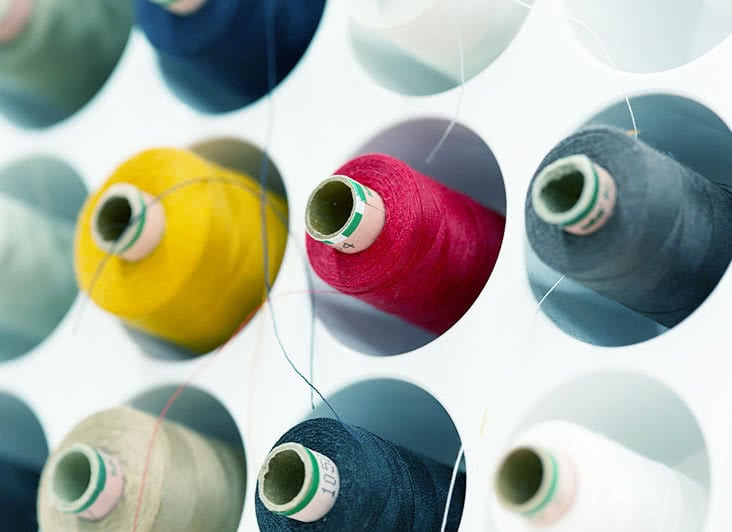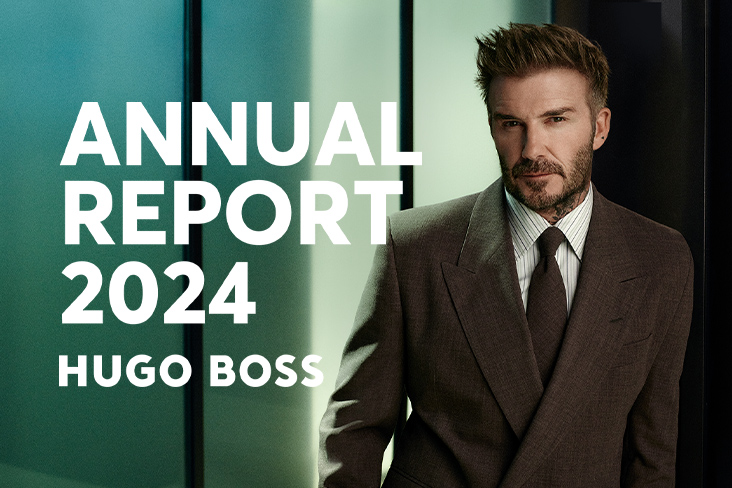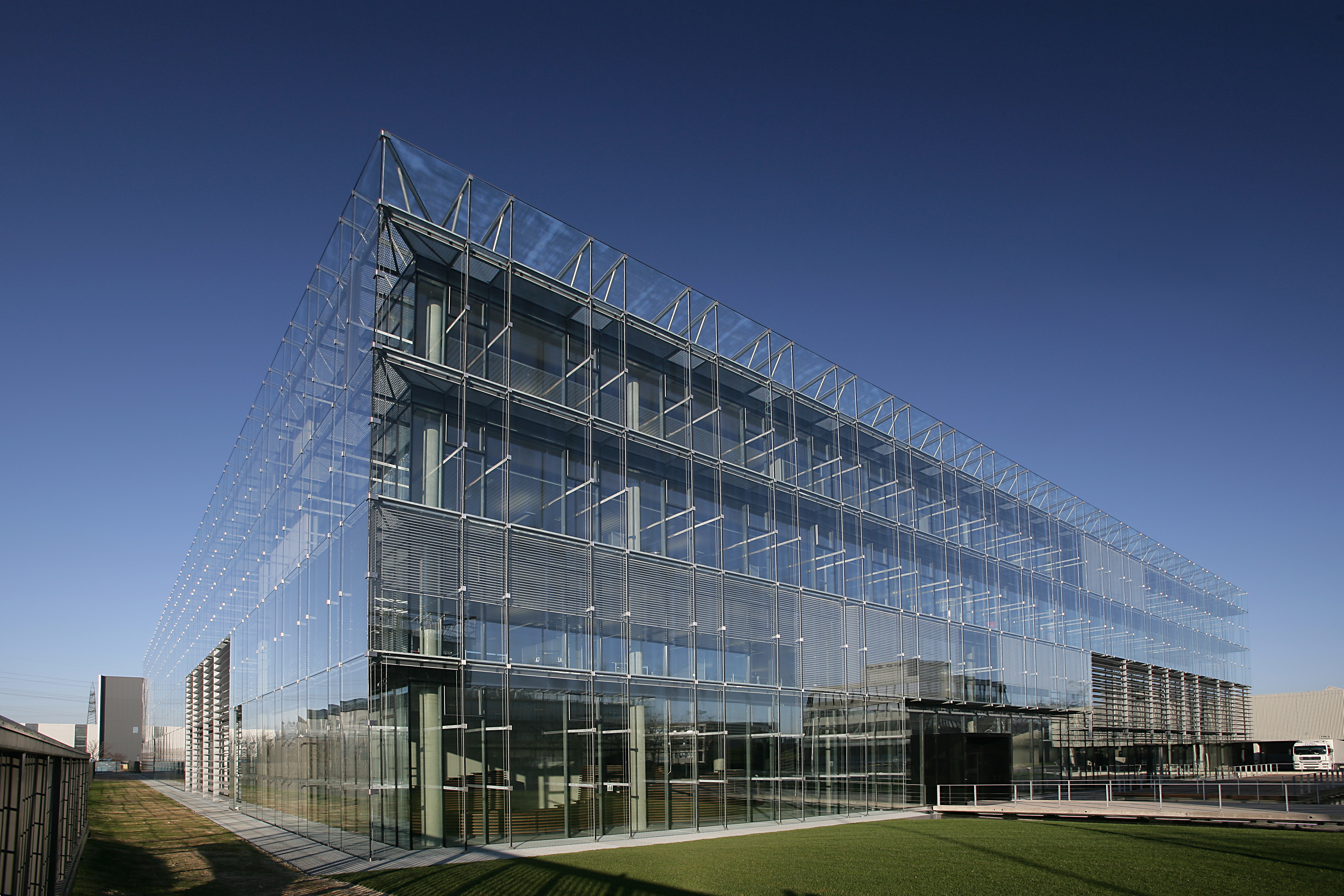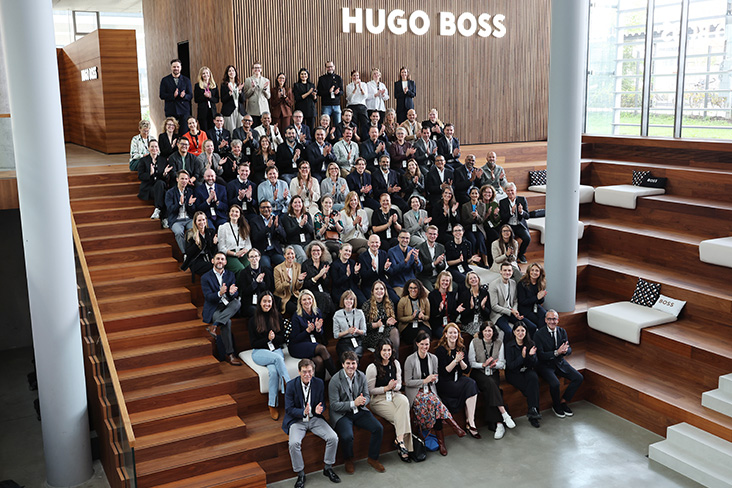Climate Protection
Climate action is deeply important to us, at HUGO BOSS. We, therefore, pursue a comprehensive and far-reaching climate strategy. We are one of the signatories of the UN Fashion Industry Charter for Climate Action, which was drafted in 2018 under the auspices of the United Nations Framework Convention on Climate Change (UNFCCC). Within the framework of the charter, HUGO BOSS, together with other companies in the fashion industry, is committed to achieving “net zero” greenhouse gas emissions by 2050. To achieve this goal, we have implemented extensive measures, both, in our own area of responsibility and along the entire value chain. Our commitment to working with responsible suppliers is particularly important, as this is where the largest share of CO2 emissions is generated. Furthermore, as a UNFCCC signatory, we also commit to a coal phase out as soon as possible and at the latest by 2030. We communicate our environmental impact and our measures transparently and also have them assessed by external stakeholders such as the CDP.
TARGETS IN THE FIELD OF ENERGY & EMISSIONS
-
Net Zero throughout the entire value chain by 2050
At HUGO BOSS, we have set out on the path to net zero emissions by 2050. To this end, we not only measure and reduce greenhouse gas emissions within our own area of responsibility, but also keep an eye on our entire value chain. By 2050, we aim to completely cut the emissions generated there (Scope 1-3) - and offset them where there is no other way. In order to achieve our goal, we have set ourselves concrete measures on our decarbonization journey and defined a roadmap until 2030.
We have set ambitious targets for reducing our CO2 emissions, and we still have some progress to make. Instead of a reduction in emissions, we still see an increase of Scope 1-3. While our emissions in Scope 1 and 2 have fallen, Scope 3 has increased compared to the base year and accounts for approximately 95% of the emissions in our whole value chain. As a result, emissions have increased by 20% across all Scopes (Scope 1-3) compared to 2019, mainly due to increasing production volumes since 2019.
We are intensifying our measures so we can reach our targets. This includes working even more closely with our suppliers, as most CO2 emissions are generated in the supply chain.
Current status: 20% increase (compared to 2019)
-
Reduction of CO₂ emissions (Scope 1+2) by > 50% by 2030
HUGO BOSS has set itself the goal of reducing Scope 1 and Scope 2 emissions (fuel and energy related) by at least 50% by 2030 (in comparison to 2019). Different energy and environmental projects (energy efficiency measures and installation of photovoltaic systems) and the switch of electricity to renewable energy sources make a significant contribution here.
Current status: Reduction of 18% (in comparison to 2019)
-
Reduction of CO₂ emissions (Scope 3) by >50% by 2030
We have set ourselves the goal of reducing Scope 3 emissions, which mainly come from production, raw material extraction and transport by at least 50% by 2030 (in comparison to 2019). The Scope 3 emissions account for approximately 95% of the emissions in our entire value chain. Therefore, we work on involving our suppliers in the strategy process and empowering them to make their own contributions to reducing emissions, and we are also actively involved in the UNFCCC working groups. Besides, we optimize transport flows in close cooperation with our transport service providers in order to reduce our transport-related emissions and thus limit the impact on the environment.
We have set ambitious targets for reducing our CO2 emissions, and we still have some progress to make. Instead of a reduction in emissions, we still see an increase of Scope 3 emissions. This is related to the strong increase of production volumes. We are therefore working to involve our suppliers in the strategy process and enable them to make their own contribution to reducing emissions and are actively involved in UNFCCC working groups. We also optimize transport flows in close cooperation with our transport service providers in order to reduce our transport-related emissions and thus limit our impact on the environment.
Current status: increase of 23% (compared to 2019)
In 2024, HUGO BOSS joined Cascale, a collaborative platform which aims to strengthen industry partnerships, enhance supplier engagement, and improve data management insights. In the same year, HUGO BOSS refined its methodology for calculating Scope 3 emissions to further enhance accuracy and credibility, aligning fully with the methodology outlined by the GHG Protocol. For determining Scope 3.1 emissions from purchased goods and services, we have now implemented the Higg Materials Sustainability Index (MSI) and the Facility Environmental Module (FEM) tools. These tools are regularly maintained by Cascale, ensuring that our data and methodology continues to meet high standards of credibility.
-
Reduction of energy consumption (direct and indirect) in relation to area (m²) by 20% by 2030
HUGO BOSS is committed to reducing the energy consumption in relation to area by 20% by 2030 (in comparison to 2019) within the Company. The implementation of numerous energy projects has contributed to saving electricity. For example, switching to LED lighting in different types of buildings, replacing technical equipment, and implementing energy efficiency projects to reduce energy consumption are all helpful in this regard.
Current status: reduction of 5% (compared to 2019)
-
100% electricity from renewable sources by 2030
By 2030, we aim to exclusively use electricity from renewable energy sources. With our eleven own photovoltaic systems in five different countries and the procurement of green electricity in 20 countries, we have already accomplished more than half of our goal as of 2024.
Current status: 73%
-
Our Science Based Targets
In addition to the targets we have set ourselves as part of our membership of the Fashion Industry Charter for Climate Action, we continue to have valid Science Based Targets, which can be reviewed on the website of the Science Based Targets Initiative (SBTi): Back in 2020, we set ourselves Science Based Targets for our Scope 1 and 2 emissions as well as our Scope 3 emissions as part of the SBTi with the following ambition. Within our own area of responsibility (Scope 1-2), we aim to reduce emissions by at least 50% compared to 2018, and outside our own area of responsibility (Scope 3) by 30% compared to 2018. In line with the Paris Climate Agreement, our Scope 1-2 target helps to keep global warming at 1.5°C, while the Scope 3 target helps to limit it to well below 2°C.
REDUCTION OF GHG EMISSIONS (SCOPE 1 and 2) (in T CO2e)
2024 2023 2022 2021 2020 2019 2018 Total Scope 1 and 2 emissions [tCO2e/y] 25,520 28,843 28,647 26,127 26,283 30,999 41,353 Change as compared to base year 2018 (in %) -38 -30 -31 -37 -36 -25 - REDUCTION OF GHG EMISSIONS (SCOPE 3, total) (in T CO2e)
2024 2023 2022 2021 2020 2019 2018 Scope 3, total [tCO2e/y] 525,268 458,409 655,393 488,739 335,377 427,903 435,911 Change as compared to base year 2018 (in %) +20 +5 +50 +12 -23 -2 HUGO BOSS refined its methodology for calculating Scope 3 emissions. The reason is to further enhance accuracy and credibility, aligning fully with the methodology outlined by the GHG Protocol. That is why - to ensure comparability, prior-year figures have also been recalculated.
REDUCING ENERGY CONSUMPTION AND CO2 EMISSIONS
Reducing energy consumption and emissions: we pursue both of these goals at all HUGO BOSS locations. Therefore, we follow strict environmental and energy management systems in accordance with DIN EN ISO 14001 and 50001, as well as the GREENBUDGET program. It was introduced throughout the Group to promote environmental and energy-saving measures.
As part of our approach to energy management, we are continuously working on reducing the energy consumption of the entire Group in order to reduce CO2 emissions. With the help of the monitoring of technical building systems at our locations and the reporting of energy consumption in retail, we are able to quickly identify issues and potential improvements. In 2018, we introduced the GREENBUDGET program throughout the Group to promote environmental and energy-saving measures, which can be submitted by subsidiaries globally and are prioritized based on their economic and environmental impacts. We installed photovoltaic systems at multiple of our production sites (Italy, Poland, Turkey and Switzerland) and replaced the previous lighting with energy-efficient LED lighting in office, warehouse, production buildings and stores in many countries. Currently more than 90% of HUGO BOSS stores and outlets worldwide are equipped with LED lighting. This will be also adopted for any opening and renovation of a HUGO BOSS store or outlet.
Our photovoltaic systems
With eleven of our own photovoltaic systems, we also contribute to reducing CO2 emissions by generating renewable energy ourselves. In total, approx. 4,900 MWh of green electricity is generated per year, the majority of which is consumed within the Company. This is equivalent to the annual consumption of around 986 four-person households.
Certified green electricity
By switching to renewable electricity, we want to further reduce our CO2 footprint. By 2030, we aim to gradually increase the share to 100%. In total, 73% of the consumed electricity currently comes from renewable energy sources. At our headquarters in Metzingen, we have been using certified green electricity exclusively since 2017. Other locations in twenty countries also use green electricity.
More sustainable Company Buildings & Stores
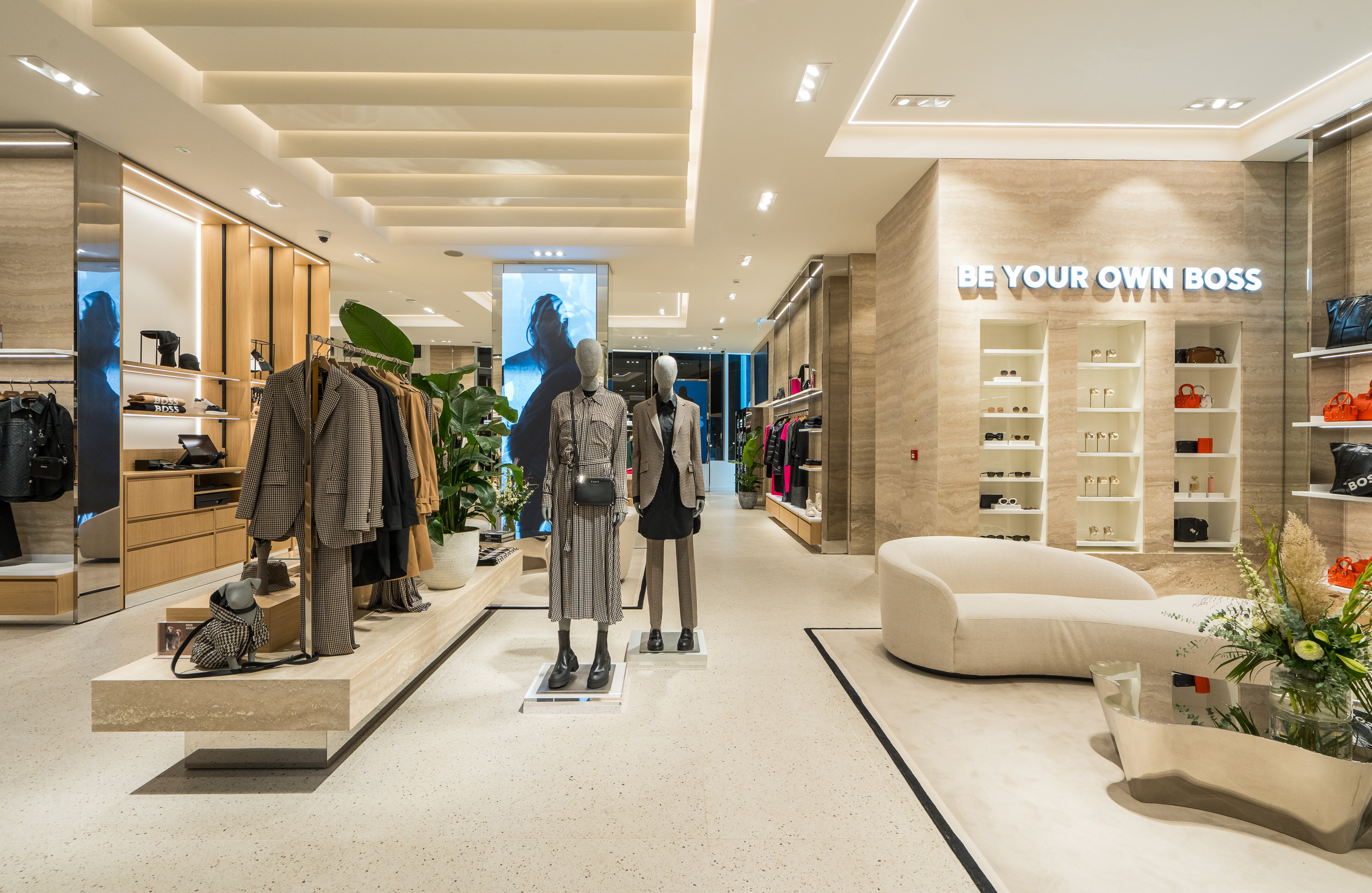
Climate Protection in the supply chain
In line with the increased requirements placed on signatories of the Fashion Industry Charter for Climate Action by the UNFCCC, HUGO BOSS aims to reduce its indirect CO2 emissions in the whole value chain, e.g. caused by suppliers and partners (Scope 3 emissions) by at least 50% (by 2030, compared to 2019). The focus will be on suppliers that generate the most emissions due to high energy requirements - especially suppliers who require a lot of energy in their processes of dyeing, tanning, or, for example, coating, steaming, or ironing.
Since far-reaching improvements are only possible together, we cooperate with various partners. For example, since 2018 HUGO BOSS has been actively involved in the "Global Climate Action for Fashion" working group of the United Nations Framework Convention on Climate Change (UNFCCC). We have also developed the free online training course "Climate Action Training for the Fashion Industry" in cooperation with GIZ (Society for International Cooperation) and the UNFCCC, as well as other international companies from the fashion industry.
